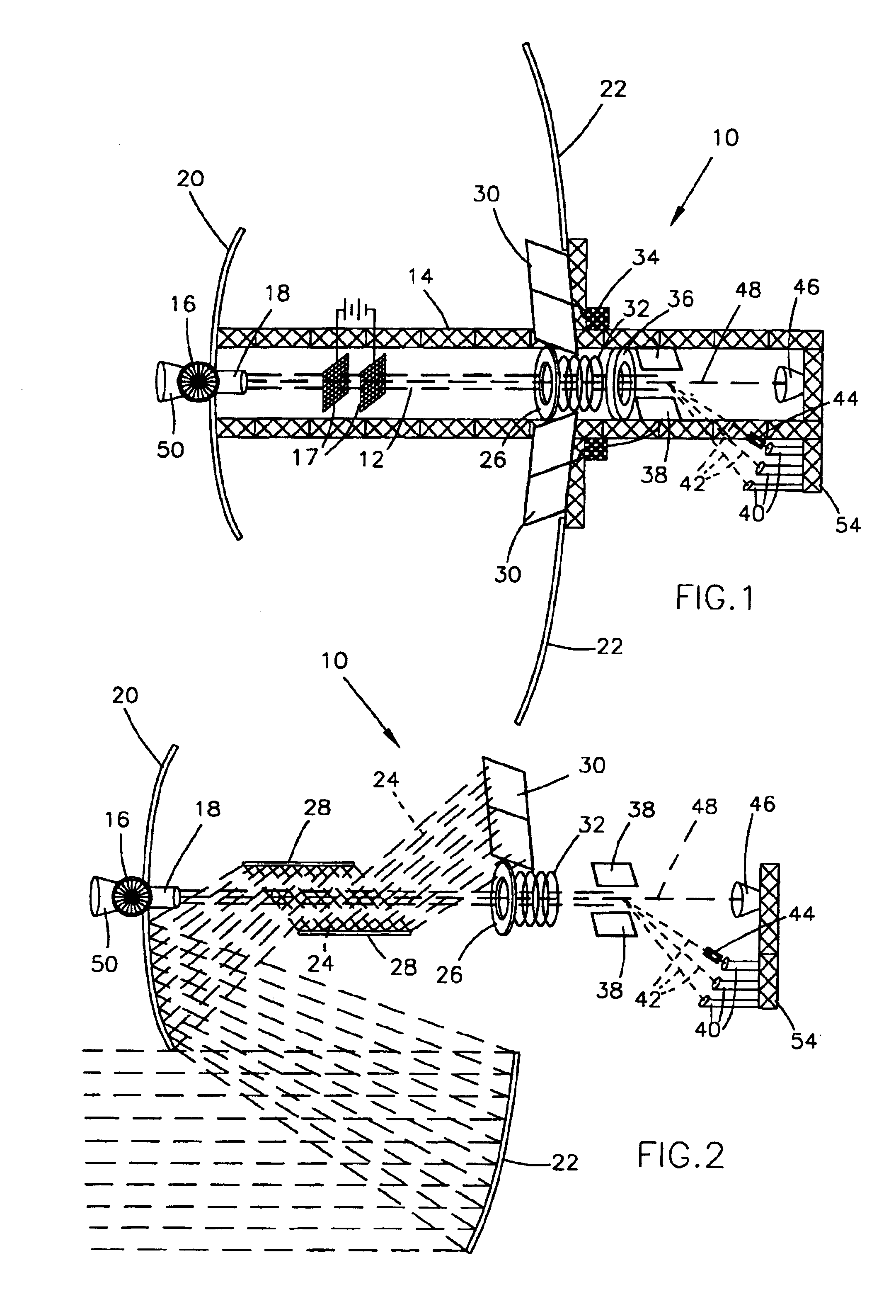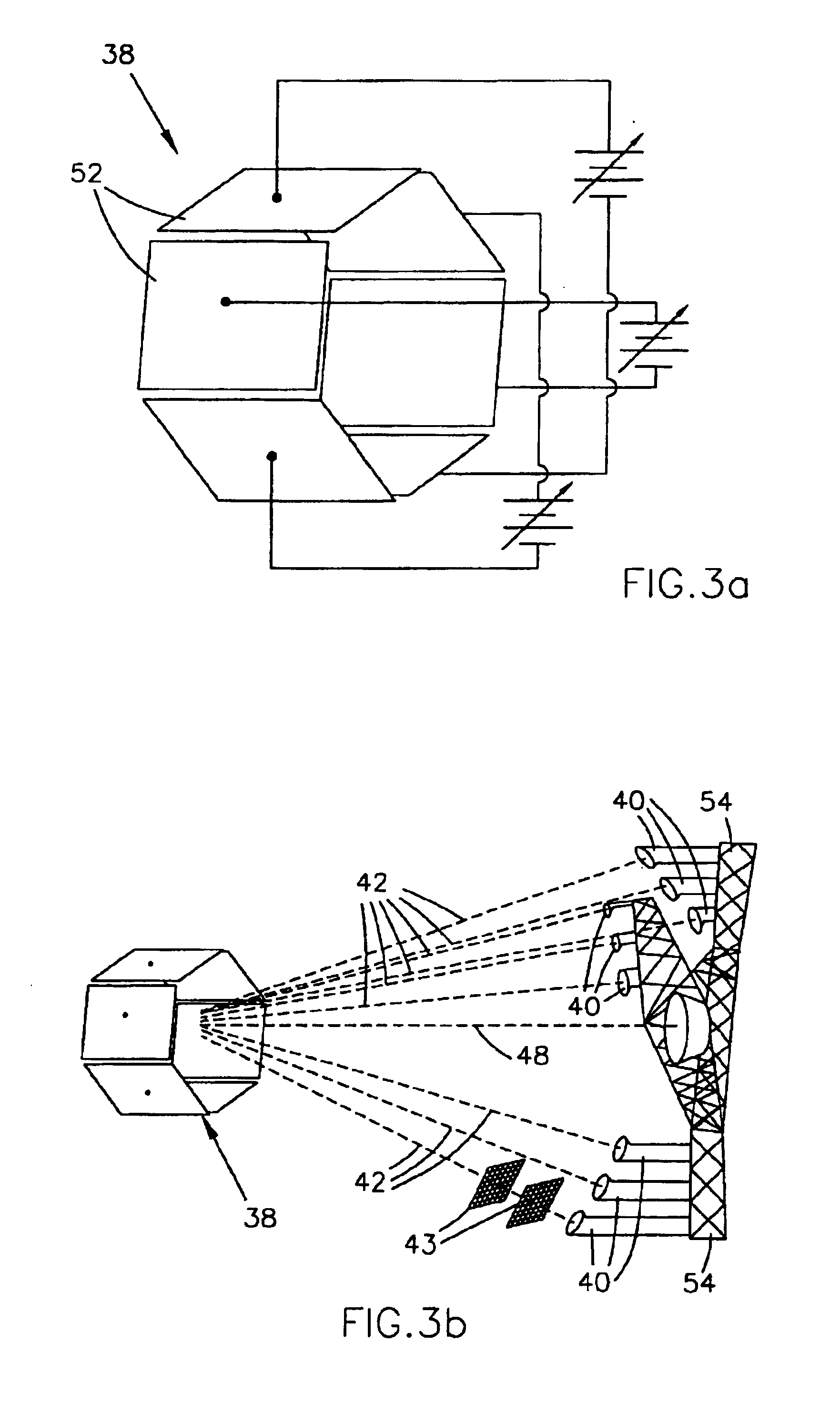Process and apparatus for isotope separation in low-gravity environment
a technology of isotope separation and low-gravity environment, which is applied in the field of ion separation, can solve the problems of high cost and complexity of equipment for these processes, and the method of ionization is substantially different, so as to minimize the spread of material stream, and minimize the spread effect of the beam
- Summary
- Abstract
- Description
- Claims
- Application Information
AI Technical Summary
Benefits of technology
Problems solved by technology
Method used
Image
Examples
Embodiment Construction
[0032]This invention presents an apparatus and process for the continuous-feed operation of a device capable of separating a plurality, or the entirety, of isotopes in a given material input stream in a single pass through the apparatus, using electromagnetic radiation (e.g., solar power, laser power, etc.) as the energy source, and using microgravity and low-gravity environments in the vacuum of space to provide additional advantages in attitude control, thermal energy conversion, and integrated design. With reference to FIG. 1, the principle of operation of an apparatus 10 configured in accordance with this invention is to first produce a stream 12 of matter, preferably in powdered form with particles of uniform size or pre-vaporized from a solar furnace, of substantially the same velocity; then heat the matter until it fully vaporizes and substantially ionizes, further ionize the matter with radio-frequency (rf) or laser radiation; then use electric or magnetic fields to impart a...
PUM
| Property | Measurement | Unit |
|---|---|---|
| density | aaaaa | aaaaa |
| diameter | aaaaa | aaaaa |
| velocity | aaaaa | aaaaa |
Abstract
Description
Claims
Application Information
 Login to View More
Login to View More - R&D
- Intellectual Property
- Life Sciences
- Materials
- Tech Scout
- Unparalleled Data Quality
- Higher Quality Content
- 60% Fewer Hallucinations
Browse by: Latest US Patents, China's latest patents, Technical Efficacy Thesaurus, Application Domain, Technology Topic, Popular Technical Reports.
© 2025 PatSnap. All rights reserved.Legal|Privacy policy|Modern Slavery Act Transparency Statement|Sitemap|About US| Contact US: help@patsnap.com



